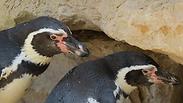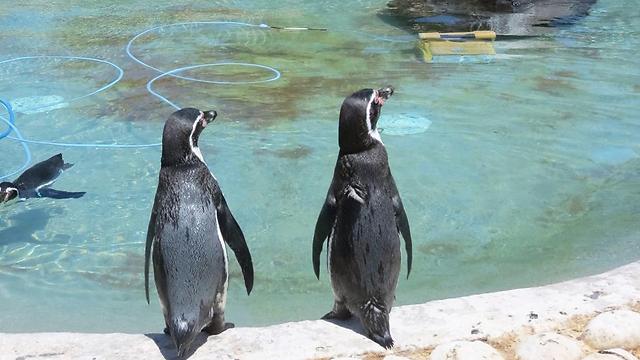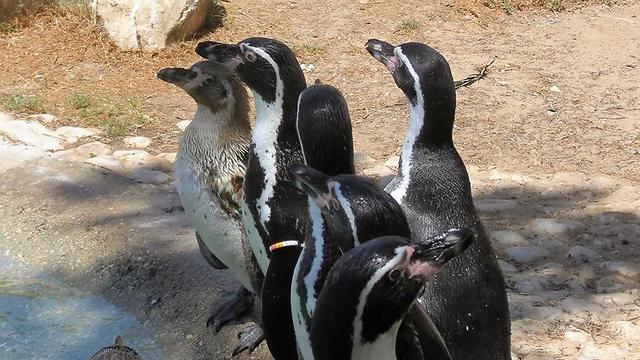
The lovebirds
(צילום: אסנת מעוז-ינקו, חי פארק קרית מוצקין)
A Song of Fire Island and Ice
What happens in the grotto stays in the grotto: Several same-sex Humboldt penguin couples have been enjoying the sun and splashing around away from media scrutiny in the Kiryat Motzkin Zoo; their community has reportedly embraced their alternative lifestyle and treats their orientation as a non-issue.
A waddle of rare Humboldt penguins in the Kiryat Motzkin Hai Park Zoo has in recent years seen an increase in its numbers, in the form of some of the most adorable same-sex couples since the Fox and the Hound.
The zoo operates an international breeding program of endangered species and is currently expecting several more chicks to be hatched soon. At present, though, its attention has been drawn to the waddle's gay and lesbian members and the nurturing they have been showing their significant others.
The waddle is comprised of 18 individuals, eight of them female and 10 male. Back when the waddle only had a few male members, two of the females, named Yafit and Brazil, formed a romantic bond. Zoo Manager Yigal Fadida reported that the couple exhibits nesting behaviors, but that neither, of course, could actually fertilize each other's eggs.

The penguin lovebirds (Photo: Osnat Maoz-Yanko and the Kiryat Motzkin Hai Park Zoo ) ((צילום: אסנת מעוז-ינקו, חי פארק קרית מוצקין))
One such couple, named Ziegel and Yigal, have recently made their relationship public, frolicking and making love out in the open, sharing their daily meals and snuggling up in the rock alcoves along the water's edge.

The waddle on a hot summer's day (Photo: Osnat Maoz-Yanko and the Kiryat Motzkin Hai Park Zoo) ((צילום: אסנת מעוז-ינקו, חי פארק קרית מוצקין))
"When we brought over the new members from the Netherlands, we thought it might help some of the males connect with the females," reminisced Fadida. "However, Brazil ended up choosing a female mate and one of the local males, as well, chose a Dutch husband." He added,"We are hoping to bring in new penguins in the future, to revitalize the penguin bloodlines."
Humboldt penguins are considered under threat of extinction due to human activity, with their numbers currently estimated at under 20,000. They can be found in nature along the Chilean and Peruvian coasts, with a few colonies in Colombia. They mainly live in reserves set up in countries like Chile, which has made a concerted effort to protect them by making it illegal to hunt them until the year 2025. Several of the reserves even have ranger stations against potential hunters.
In addition to hunting them for their meat, the Humboldt penguin's droppings are also valuable, considered to be a very high-quality fertilizer. As a result, merchants try to steal their droppings, which the penguins use for the eggs' protection come nesting season.











